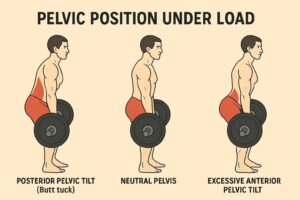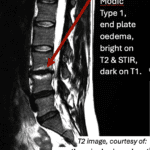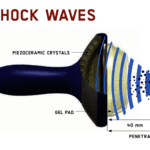By Robert Shanks, Director Spine Plus Clinics
Shear force occurs when two parts of the spine are forced to slide past each other horizontally, rather than being compressed vertically.
Think: pushing a deck of cards sideways — the layers shift out of alignment.
Main Causes of Shear Force on the Lumbar Spine:
1. Spinal Flexion Under Load
Bending at the spine rather than at the hips — especially under load
• Examples:
• Rounding the back during deadlifts or squats
• Sitting or slouching with a loaded barbell on your back
• Effect:
• Forward flexion changes the angle of load → creates shear at L4–L5 or L5–S1
• Discs and ligaments bear shear instead of muscles
2. Excessive Anterior Pelvic Tilt (APT) Under Load
Over-arching the lower back under compression
• Common in:
• Standing calf raises
• Back squats
• Overhead presses
• Effect:
• Puts your lumbar spine into excessive lordosis
• Causes vertebral bodies to angle and create shear stress forward/downward
• Fix:
• Brace the core, keep ribs down, glutes slightly tucked (“neutral pelvis”)
3. Forward Leaning Torso with Vertical Load
Torso angle turns vertical compression into shear
• Example:
• Barbell good mornings, bent-over rows with poor bracing
• The more your torso leans forward, the more horizontal (shearing) force is placed on the lumbar spine
4. Improper Seated Posture Under Load
Sitting with a rounded low back while bearing weight (e.g., in machines)
• Seen in:
• Leg press with a rounded lumbar spine
• Seated rows where you slouch
• Even without a heavy barbell, prolonged shear stress can be a problem here
5. Horizontal or Diagonal Load Vectors
Exercises where force pulls the spine sideways or diagonally
• Examples:
• Poor technique in cable woodchoppers
• Offset carries (if not properly braced)
• Landmine presses with side lean
• These movements require strong anti-shear core engagement
6. Instability or Fatigue in the Core
If your core can’t resist motion, even vertical loads can turn into shear
• Especially important in:
• High-rep squats/deadlifts
• Advanced overhead lifts
• Any time you lose bracing mid-set
How to Minimise Shear Force:
• Neutral spine (not rounded or over-arched)
• Brace the core (360° pressure, not just abs)
• Hinge from the hips, not the back
• Progressive loading — don’t chase weight at the expense of form
• Use box supports, belts, or machines where appropriate

Bottom Line:
Shear force is mainly created by poor positioning or posture, especially when the spine moves under load.
Axial loading itself isn’t dangerous — it’s when vertical force becomes diagonal or horizontal (due to angles or flexion) that problems arise.
Struggling with a disc problem? Want to nail your posture, core muscle activation? Interested in IDD Spinal Decompression Therapy?
Book in with one of our specially trained osteopaths




